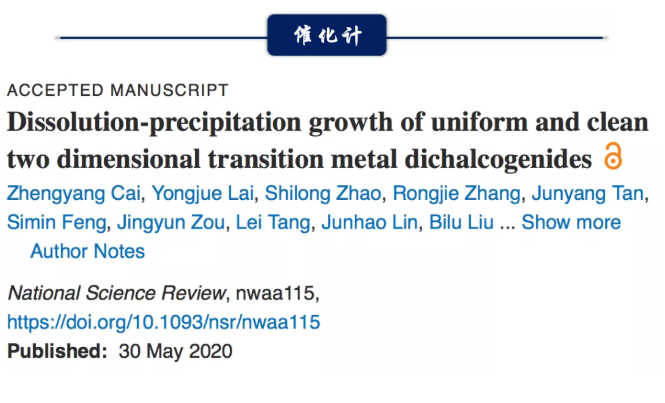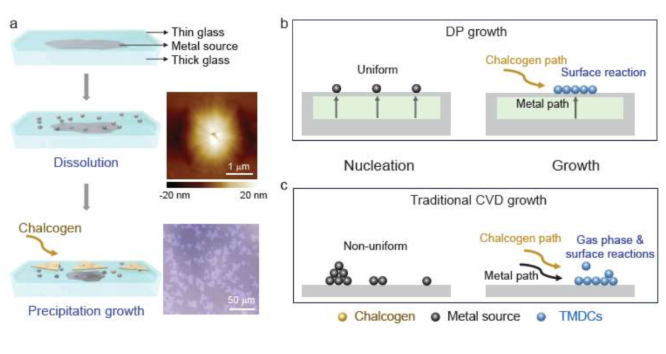Academician Cheng Huiming NSR: Dissolve-precipitate grows clean and uniform TMDCs
QQ Academic Group: 1092348845
Detailed

Two-dimensional (2D) transition metal disulfides (TMDCs) have attracted great attention and are expected to be used in many fields. However, since it is difficult to control the way in which reactants are supplied to the reaction during chemical vapor deposition (CVD) growth, it is difficult to obtain uniform TMDCs with clean surfaces.
In view of this, Associate Professor Liu Bilu of Tsinghua-Berkeley Shenzhen College and Academician Cheng Huiming of the Institute of Metals of the Chinese Academy of Sciences reported a new growth method of "dissolution-precipitation" (DP) growth, which seals the metal source inside the glass substrate to control Its feed to the reaction.

Highlights of this article
Point 1. In this method, the metal source is embedded between two pieces of glass and gradually diffuses to the surface of the upper glass during the growth process. In this way, the researchers achieved a uniform feed of the metal source, and only limited the reaction to the surface of the top glass. At the same time, since the metal source and the sulfur source do not share the same diffusion path, any unwanted gas phase is avoided reaction.
Point 2. Researchers used this method to successfully grow a highly uniform and clean single-layer TMDCs on the surface of centimeter-level molten glass. At the same time, this method has been used in various TMDCs and alloys such as MoSe2, WS2, MoTe2, MoxW(1-x)S2, V-doped MoS2, and has good versatility.

Zhengyang Cai, et al, Dissolution-precipitation growth of uniform and clean two dimensional transition metal dichalcogenides, National Science Review, 2020
DOI: 10.1093/nsr/nwaa115
https://doi.org/10.1093/nsr/nwaa115
This information is from the Internet for academic exchanges. If there is any infringement, please contact us and delete it immediately
- Previous: Prog.Poly. Sci. of Don
- Next: IF 19! Reprogram tumor


 Academic Frontier
Academic Frontier